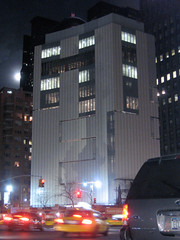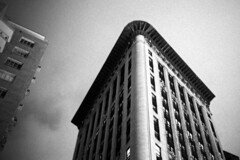North:
57 (corner):
The Coronet is
an 11-story red-brick apartment building from
1901, condoized in 1976. Time has not been
particularly kind to it. Used to house the
Manhattan Ocean Club, noted seafood restaurant.
This Henry Hardenbergh-designed castle
opened in 1907, replacing an earlier
outgrown version.
F. Scott and Zelda Fitzgerald lived the high
life here in 1922. Frank Lloyd Wright rented suite 223 here
from 1953 until his death in 1959; it was
here that he designed the Guggenheim Museum.
The Beatles stayed here on their first visit
to America in February 1964.
Truman Capote's Black and White Ball was held here
on November 28, 1966. From 1988 until
1995 it was owned by Donald Trump.
The hotel is
the setting of the children's classic
Eloise,
and is a setting for many films, including
North by Northwest,
Barefoot in the Park, Funny Girl, Plaza Suite,
The Way We Were, The Great Gatsby,
Network, Love at First Bite, Arthur, The Cotton Club,
Crocodile Dundee, Big Business, King of New York,
Home Alone 2 and Almost Famous.
It was repeatedly featured on Sex and the City
and The Sopranos.
Grand Army Plaza
This plaza, technically a part of
Central Park but really a distinct entity,
is bifurcated by Central Park South, a
layout inspired by Paris' Place de la Concorde.
It honors the Grand Army of the Republic, the
powerful post-Civil War veteran's organization,
comparable to the American Legion.
The southern half of Grand Army Plaza is centered on this fountain,
into which F. Scott Fitzgerald
once jumped "just out of sheer joy,"
It was funded by the will of publisher
Joseph Pulitzer
--a beyond-the-grave challenge to his rival William
Randolph Hearst, who had underwritten Columbus
Circle's Maine Memorial. The statue in the
fountain is
Karl Bitter's Abundance,
featuring the Roman goddess
Pomona. Bitter, who had promoted the Place de la Concorde
as a pattern for the Plaza, finished the clay
model for the sculpture the same day he was fatally
struck by a car outside the
Metropolitan Opera House.
|



